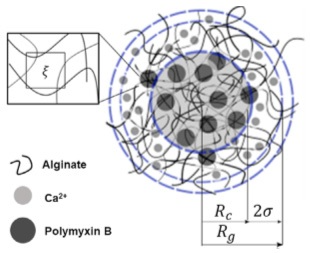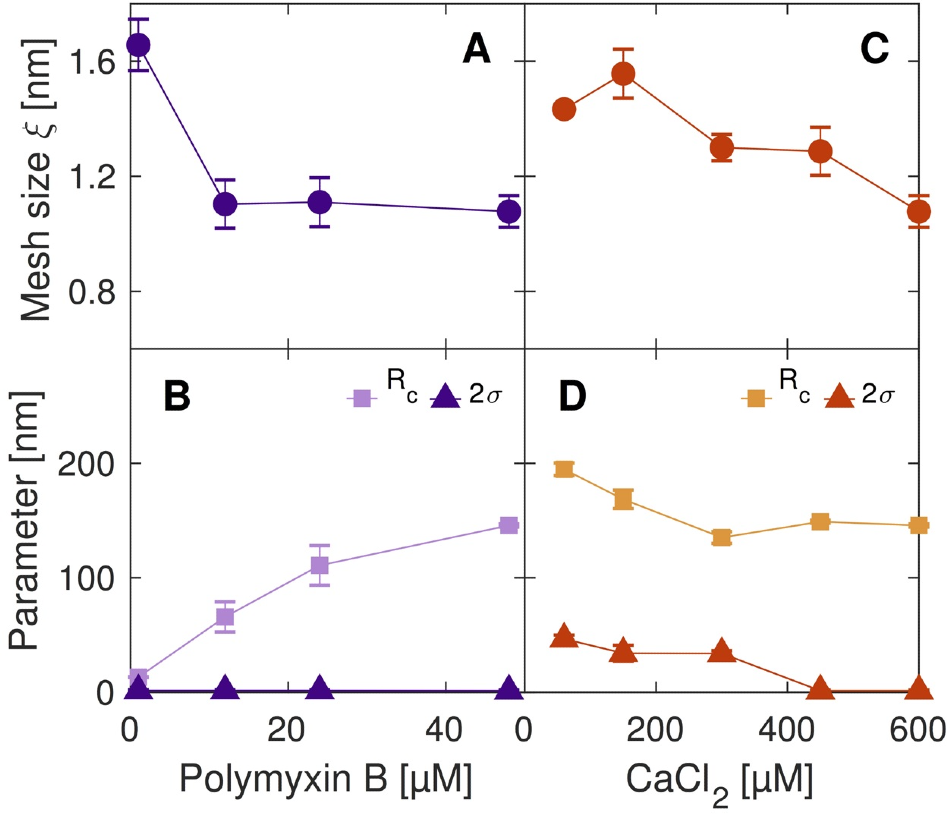Microgels are colloidal particles made up of cross-linked, 3D polymer networks. These particles can shrink or swell significantly when affected by external stimuli, including temperature, pH levels, ionic strength, and light.
This ability to shrink and swell allows for the triggered release of encapsulated bioactive molecules. In addition to this, these particles protect the loaded molecules from degradation, and they can also increase their physical stability.
As a result, microgels have become promising candidates for tuneable drug delivery systems. Microgels have also proven to be interesting when considering materials development applications, as they are simply functionalized, with their potential applications including tissue engineering and biosensors.1,2
Measurements and Results
Borro et al.3 used Small Angle X-ray Scattering, (SAXS) on the BiolXolver L to gather structural information on microgels that were made up of biodegradable polymer alginate and loaded with polymyxin B, which is a model antimicrobial peptide.
They studied how the method of preparation and concentration of the ionic crosslinker Ca2+ and polymyxin B affected the microgel structure. The SAXS data sets Borro et al. acquired were fitted with a core-shell model, as seen in Figure 1, which gave information on the mesh size (ξ) of the polymer network and the dimension of the dense core (Rc ). In addition to this, information on the microgel’s (2σ) fuzzy outer layer was also acquired. For details of the study, see the literature by Borro et al. 3

Figure 1. Core-shell model used for fitting of the microgel SAXS data. ξ: mesh size of the polymer network, Rc: radius of the dense core, σ: the thickness of the shell, Rg: radius of gyration.
The mesh size ξ (Figure 2, A) and the size of the fuzzy layer 2σ (Figure 2, B) were found to be generally unaffected by the amount of polymyxin B. In contrast, the microgel core Rc (Figure 2, B) was seen to grow when more peptide was loaded, which agreed with the concept that polymyxin B is situated within the particle’s core.
Introducing higher levels of crosslinker led to a smaller mesh size (Figure 2, C) that presented with a denser polymer network. The particles were smaller in size overall, as seen in Figure 2, D. SAXS data showed that the core and the fuzzy layer both decreased in size with higher levels of crosslinking.

Figure 2. Structural parameters of the microgels, extracted from the SAXS data as a function of the amount of peptide-loaded (Polymyxin) and crosslinker (CaCl2) respectively.
Summary
The robotic loading of the BioXolver allows investigations into a large number of samples in an automated way. Therefore, it is optimal for the study of microgels, which typically requires the investigation of a broad range of conditions.
References and Further Reading
- Agrawal, G. & Agrawal, R. Functional Microgels: Recent Advances in Their Biomedical Applications. Small 2018, 14, e1801724.
- Plamper, F. & Richtering, W. Functional Microgels and Microgel Systems. Accounts Chem. Res. 2017, 50, 131–140.
- Borro, B. et al. Microfluidics-Based Self-Assembly of Peptide-Loaded Microgels: Effect of Three Dimensional (3D) Printed Micromixer Design. J. Colloid Interf. Sci. 2019, 538, 559-568.

This information has been sourced, reviewed and adapted from materials provided by Xenocs.
For more information on this source, please visit Xenocs.